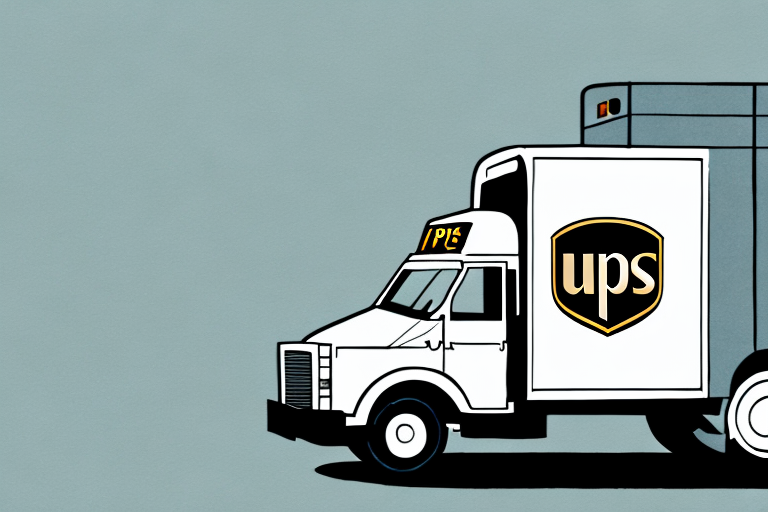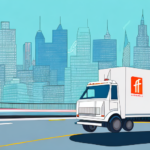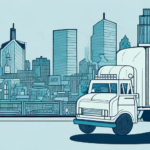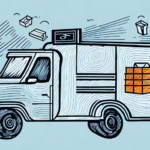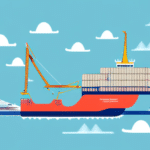Understanding the Importance of Last Mile Delivery
Last mile delivery is the final stage of the delivery process, where the delivery person travels from the distribution center to the customer's location. Despite being the last stage, it is considered the most critical aspect of the delivery process as it is the point of interaction between the customer and the delivery service provider. This has made last mile delivery a crucial component of a business's logistical management, affecting the customer's purchasing experience and overall satisfaction. In light of this, businesses need to optimize their last mile delivery process to enhance customer satisfaction and operational efficiency.
Why Last Mile Delivery Matters for Your Business
With the surge in e-commerce, customers no longer wait to acquire their products from brick-and-mortar stores. They now expect faster, same-day or next-day deliveries. For businesses operating in the digital space, last mile delivery is, therefore, a necessity, and poor management of this stage can lead to high shipping costs, delayed deliveries, damaged products, and unsatisfied customers. According to a Deloitte report, last mile delivery costs can account for up to 53% of the total shipping costs. These issues can negatively impact a business's reputation, leading to loss of revenue and customers. As a result, optimizing last mile delivery is critical in ensuring customer satisfaction, repeat business, and brand loyalty.
One way to optimize last mile delivery is by leveraging technology. Delivery management software can help businesses track and manage their deliveries in real-time, providing visibility into the entire delivery process. This can help businesses identify and address any issues that may arise, such as traffic delays or incorrect addresses, before they become major problems. Additionally, technology such as route optimization algorithms can help businesses plan the most efficient delivery routes, reducing delivery times and costs. By embracing technology, businesses can improve their last mile delivery operations and provide a better customer experience.
The Challenges of Last Mile Delivery
Last mile delivery poses several challenges that make it a difficult stage in the delivery process. One of these challenges is the delivery person's inability to access the customer's location, mainly due to the customer's absence or difficulty finding the address. Another challenge is delivering to remote locations, such as rural areas, where roads are poorly maintained, making navigation difficult. Other factors such as traffic congestion, changing customer preferences, and unexpected weather patterns can significantly complicate last mile delivery.
One of the biggest challenges in last mile delivery is the need for speed and efficiency. Customers expect their packages to be delivered quickly, and companies are under pressure to meet these expectations. This has led to the adoption of new technologies such as drones and autonomous vehicles, which can help speed up the delivery process. However, these technologies are still in their early stages and face regulatory and technical challenges that need to be addressed before they can be widely adopted. According to a McKinsey report, the drone delivery market is projected to grow significantly by 2030, highlighting the potential and hurdles of such technologies in last mile delivery.
How UPS is Revolutionizing Last Mile Delivery
UPS understands the challenges associated with last mile delivery and has developed strategies to revolutionize this stage of the delivery process. These strategies include the development and integration of innovative technologies that facilitate route optimization, reduce delivery times and costs, and improve package security and tracking. UPS has also invested in logistics infrastructure, such as logistics hubs and drones, to improve delivery efficiency and speed. To learn more, visit UPS's official website.
Another way UPS is revolutionizing last mile delivery is through partnerships with local businesses. By partnering with local businesses, UPS can utilize their existing infrastructure, such as storefronts and warehouses, to create pickup and drop-off locations for packages. This not only reduces the number of stops a delivery driver has to make, but also provides customers with more convenient options for receiving their packages.
Additionally, UPS is committed to sustainability and reducing its carbon footprint. To achieve this, UPS has implemented alternative delivery methods, such as electric and hybrid vehicles, and has even tested out delivery by bike in some urban areas. By reducing emissions and utilizing more eco-friendly delivery methods, UPS is not only helping the environment, but also improving the overall efficiency of last mile delivery. For more details, see UPS's sustainability efforts here.
The Benefits of Partnering with UPS for Last Mile Delivery
Partnering with UPS for last mile delivery has several benefits for businesses. UPS provides extensive delivery coverage, allowing businesses to deliver to remote locations with ease. Their state-of-the-art tracking systems guarantee the security of products during delivery, preventing theft or damage. Additionally, UPS's advanced route optimization technologies reduce delivery times and costs, making them a cost-effective partner for businesses looking to optimize their last mile delivery processes.
Another benefit of partnering with UPS for last mile delivery is their commitment to sustainability. UPS has implemented several eco-friendly initiatives, such as using alternative fuel vehicles and optimizing delivery routes to reduce carbon emissions. By partnering with UPS, businesses can reduce their carbon footprint and contribute to a more sustainable future.
Furthermore, UPS offers a range of customizable delivery options to meet the unique needs of businesses and their customers. From same-day delivery to scheduled delivery windows, businesses can choose the delivery option that best suits their needs. This flexibility allows businesses to provide a better customer experience and increase customer satisfaction.
Strategies for Streamlining Last Mile Delivery Processes
Leverage Technology
Businesses can streamline their last mile delivery processes by leveraging technology to optimize delivery routes and reduce delivery times. This involves integrating route optimization software, GPS tracking systems, and mobile devices to facilitate real-time communication between delivery personnel and the distribution center. Businesses can also adopt efficient transportation modes such as cargo bikes, drones, or electric vehicles to reduce fuel costs and carbon emissions.
Partner with Local Businesses and Third-Party Logistics Providers (3PLs)
Another strategy for streamlining last mile delivery processes is to partner with local businesses or third-party logistics providers (3PLs) to handle the final leg of the delivery. This can help businesses reduce the number of delivery vehicles on the road, as well as the associated costs of maintaining a fleet. Additionally, partnering with local businesses can help businesses tap into their knowledge of the local area, which can be particularly useful for navigating complex urban environments.
Offer Flexible Delivery Options
Finally, businesses can streamline their last mile delivery processes by offering customers more flexible delivery options. This can include options such as same-day or next-day delivery, as well as the ability to choose a specific delivery time window. By offering more flexible delivery options, businesses can improve customer satisfaction and reduce the likelihood of missed deliveries, which can be costly for both the business and the customer.
Leveraging Technology to Enhance Last Mile Delivery Efficiency
Technology plays a crucial role in enhancing last mile delivery efficiency. Businesses can leverage technologies such as the Internet of Things (IoT), Artificial Intelligence (AI), Machine Learning (ML), and Big Data to optimize their delivery processes further. These technologies enable businesses to track packages in real-time, predict delivery times, optimize routes, and automate the delivery process, improving delivery times, costs, and the overall customer experience.
One of the most significant benefits of leveraging technology in last mile delivery is the reduction of delivery errors. With real-time tracking and automated delivery processes, businesses can minimize the risk of lost or damaged packages. Additionally, these technologies can help businesses identify and address delivery issues quickly, improving customer satisfaction and loyalty. By investing in technology, businesses can stay competitive in the fast-paced world of e-commerce and meet the growing demand for fast, reliable, and cost-effective delivery services.
How UPS is Utilizing AI and Machine Learning to Optimize Last Mile Delivery
UPS has been at the forefront of leveraging AI and Machine Learning to enhance last mile delivery efficiency. Their Chatbot, UPSBot, provides customers with instant responses to delivery-related queries, thereby improving customer engagement. UPS also uses machine learning algorithms to optimize delivery routes by analyzing traffic patterns, weather conditions, and other data points in real-time, reducing delivery times and costs. Learn more about UPSBot here.
In addition to their use of AI and machine learning for last mile delivery, UPS has also implemented these technologies in their sorting and distribution centers. By using computer vision and machine learning algorithms, UPS is able to automate the sorting process, reducing errors and increasing efficiency. This has allowed UPS to handle a larger volume of packages, while also reducing the need for manual labor. Overall, UPS's use of AI and machine learning has helped them to stay competitive in the rapidly evolving logistics industry.
Examining the Impact of Data Analytics on Last Mile Delivery
Data analytics provides businesses with insights into customer behavior, delivery patterns, and trends, enabling them to make informed decisions in their delivery processes. UPS uses data analytics to predict delivery times, optimize routes, and improve security during transit. With data analytics, businesses can make informed decisions that impact their bottom line and customer satisfaction.
One of the key benefits of data analytics in last mile delivery is the ability to track and monitor delivery performance in real-time. This allows businesses to identify and address any issues that may arise during the delivery process, such as delays or missed deliveries. By addressing these issues quickly, businesses can improve their delivery performance and customer satisfaction.
In addition to improving delivery performance, data analytics can also help businesses reduce their environmental impact. By optimizing delivery routes and reducing the number of vehicles on the road, businesses can decrease their carbon footprint and contribute to a more sustainable future. This is particularly important in urban areas, where traffic congestion and air pollution are major concerns.
Best Practices for Improving Customer Experience with Last Mile Delivery
- Provide Accurate Delivery Times: Ensuring that customers have realistic expectations about when their packages will arrive.
- Offer Delivery Notifications: Keeping customers informed about the status of their delivery through email or SMS notifications.
- Leverage Social Media: Using social media platforms to communicate updates and engage with customers.
- Provide a Range of Delivery Options: Allowing customers to choose from various delivery times and locations.
- Ensure Seamless Returns and Refunds: Making the process of returning or refunding products straightforward and hassle-free.
By adopting these customer-centric practices, businesses can improve customer satisfaction, brand loyalty, and generate repeat business.
Case Study: Success Stories of Businesses that Have Optimized Last Mile Delivery with UPS
Businesses that have partnered with UPS to optimize their last mile delivery processes have reaped significant benefits. One such business is the furniture retailer, West Elm, which integrated UPS's route optimization algorithms and delivery tracking systems to offer same-day deliveries to its customers. Other businesses that have partnered with UPS include Autonomous, Expresco Foods, and Stamps.com, all of which have reported improved delivery times and customer satisfaction rates.
Future Trends in Last Mile Delivery and What They Mean for Your Business
Last mile delivery is continually evolving, and businesses need to stay up to date with emerging trends to remain competitive. Some of the trends expected to shape the future of last mile delivery include the use of drones, autonomous vehicles, delivery robots, and decentralized delivery networks. Businesses that embrace these technologies and practices are likely to improve their efficiency, lower delivery costs, and increase customer satisfaction, leading to increased revenue and profitability.
Conclusion
Optimizing last mile delivery is essential for businesses looking to improve their operational efficiency, reduce costs, and generate more revenue. Working with a reputable delivery service provider such as UPS can help businesses achieve these goals. By embracing innovative technologies, adopting efficient delivery processes, and putting the customer first, businesses can significantly enhance their last mile delivery processes, resulting in satisfied customers and repeat business.













